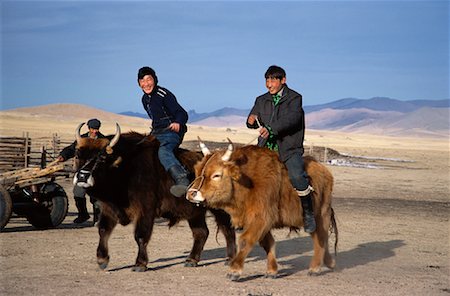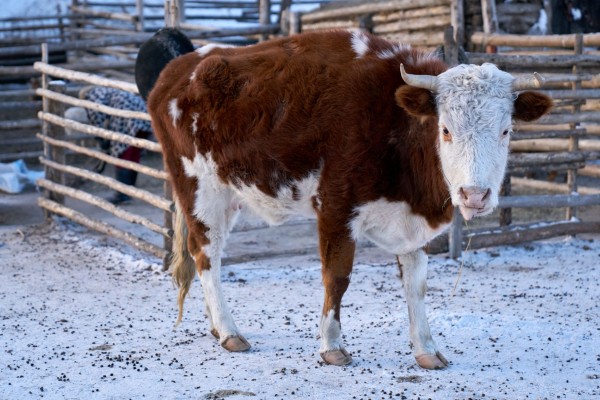Mongolian cattle is a Chinese indigenous cattle breed. The largest portion is located in Inner Mongolia. However, some exist in the northeast, north, and northwest. Coat colours range from brindle or reddish-brown but occasionally can also be seen in black, yellow, or pied.
Also Read: Mongolian horse: war steeds of Genghis Khan
The Mongolian is a Turano-Mongolian breed, the Mongolian is a triple-purpose breed used for milk, beef and work.
Turano-Mongolian, in reference to cattle, refers to a distinctive skull formation that includes a wedge-shaped skull, a depression on the frontal bone, a narrow crown and horns growing straight-up.

The cattle have two types: Ujumqin and Halhïn Gol. In 1949, Mongolian cattle began to be improved with crossbreeding to European breeds in limited numbers.
Mongolian cattle have been herded for centuries by nomads and are highly valued for their meat.
heir bone structure is very strong and sturdy and they have stocky body types with low, narrow hindquarters and good udder conformation. They stand approximately 110cm tall which is relatively small to other breeds, adult cows weigh between 280 and 400kg and bulls 550 and 600kg. It can take up to 7-8 years for the Mongolian to reach its full size although studies have been done to show if high-quality food supplements are given the growth rate increases. Bodyweight and conformation of Mongolian cattle are influenced greatly by the type of natural grassland on which they are reared. Cattle kept on pasture, steppe, semi-desert-steppe and desert have a tendency to become increasingly smaller in that order.
Mongolian heifers first come on heat at the age of 8-12 months but are not used for breeding until 2 years of age. There is a breeding season from April to November, but most cows are bred from May to September because of marked seasonal differences in climate and condition of the grassland.
In 2008, 40,000 of the breed died due to harsh winter conditions.
